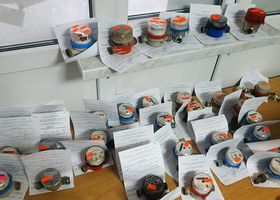New electricity market: waves, rocks and reefs
The first month of the new market is over, and you can see, which fears have come true and which ones – have not

On 1 July 2019, Ukraine switched to a new model of the wholesale electricity market: from the pool model (sole buyer – SE “Energorynok”) to a competitive market. Before launching the new market, participants, experts and politicians suggested a deferral – quarterly (experts, MPs) or a year (the President). Just last week, the Cabinet approved the necessary regulatory framework and the new market started.
Therefore, the first month of the new market is over, and you can see, which fears have come true and which ones – have not.
There was no collapse
Before launching the new market, experts were talking about chaos and system collapse: this forecast did not come true.
"The power system is operating in a regular mode, there were no power outages, consumers did not notice the deterioration of the quality of services due to the launch of the new model of electricity market" – just these signs are successful for launching the new market, says Oksana Kryvenko, Chairman of the National Commission for the State Regulation of Energy and Utilities (NERC).
Domestic consumers will agree with it, and they have not even noticed the transition to the new market. The government has imposed special public service obligation (PSO) on state-owned companies to provide low-priced electricity to the population by 2020, so tariffs for the population have not changed.
The prices were tried to keep even for non-domestic consumers: NERC set price caps – price restrictions in market segments. For example, prices in the "day-ahead" market are only a few times a day close to the maximum permissible levels, though most often 1-5% below the limits.
Where was the negative?
The reality of non-domestic consumers is not so optimistic in this regard. According to Andrii Herus, the Presidential representative in the government, the price of electricity for non-domestic customers (industry and budget organizations) increased by 5-30%.
JSC "Nikopol Ferroalloy Plant" (NFP) expressed its dissatisfaction with the market. The plant has challenged one of the cornerstones of NERC resolution for the new market – setting a new tariff for NPC Ukrenergo. Since July, the tariff includes compensation for producers of “green” energy, which increases it six times – from UAH 57.4 per MWh to UAH 347.43 per MWh. The price of electricity in the cost of production of the NFP is the largest component, and the increase in the transmission tariff has significantly affected the interests of the plant.
Interestingly, the fight for the cost of ferroalloys has led to the blocking of “green” tariff payments to renewable electricity producers. And NPC Ukrenergo was able to take only UAH 454 million from the market, with UAH 1.58 billion to be paid to the “greens.“
For some state-owned enterprises that were customers of the "last hope" provider, nothing has changed (for the better – ed.) – unfortunately, they continue to stably accumulate debts, and this problem is still not solved," said Roman Nitsovych, expert of Dixi Group.
Why the price of electricity has increased
To “freeze” electricity prices for population, the government restricted access to the free market by state-owned NNEGC Energoatom and Ukrhydroenergo PJSC. The state-owned companies are required to sell 90% and 20% of their output to the “Guaranteed Buyer” (GB) at low prices.
In its turn, GB sells the volumes required for population to universal service providers (USPs) at fixed prices, as well as to cover the losses in the networks to distribution system operators (DSOs, former power companies) and to the transmission system operator (NPC Ukrenergo). The rest should be sold
by GB on the “day-ahead” market (DAM).
However, the PSO volumes set by the government for NNEGC Energoatom have proved to be too high. “In the first two weeks of July, according to the data of the “Market Operator“, GB occupied about half of the volume of sales on the DAM – this is the “residual”electricity of GB. So, GB makes a profit at the expense of the state generation”, says Nitsovych.
In other words, the NNEGC Energoatom received a rise in revenues from the entry into DAM, but much of its potential revenue has shifted to GB. According to Nitsovych, this situation testifies to the inefficiency of the PSO system.
Two-way stabilization
For the first month of the market, it is already noticeable that price caps from NERCEP really stabilized the system and allowed to avoid price jumps on the market. However, in combination with restrictions of NNEGC Energoatom to access the low-priced electricity market, the price caps have led to a restriction of the market supply.
“Most thermal generation goes to the bilateral contracts market, the rest sell electricity on the "day-ahead"market and intraday market. But there is a temptation in thermal generation to leave the DAM forbalancing market, because it is more expensive there,” Nitsovych says.
At night, electricity consumption is lowered to a minimum, and prices are usually much lower than daily. Night price caps currently amount to UAH 959.12 per MWh. And at this price, the thermal generation does not trade all free volumes on the "day-ahead" market.
As a result, imbalances in the energy grid can reach 1100 MW. The situation requires the response of the dispatcher to load the TPP or HPP under the emergency command. For this, the plants will receive +15% to the price caps, and the price of their electricity will rise to UAH 1102.99 per MWh.
“If the generation volumes for PSO are revised, more volume of low-priced electricity will go to organized markets and we will see a more interesting picture than we do now. The decision is on the Cabinet of Ministers, because just it has imposed the provisions on special Public Service Obligations,”Nitsovych says.
The regulator could also respond to the situation with imbalances, for example, by revision the price caps for the balancing market.
What and when can they change in the market?
Changes to the new market operation can be made by Verkhovna Rada (through the Law of Ukraine "On Electricity Market"), the Cabinet of Ministers (through Resolution on PSO and regulation of state companies) and NERC (through resolutions and codes).
“When a new cabinet is appointed, a new market will operate for at least two months. It will be possible to draw conclusions, at least in the part of the PSO mechanisms and the payment of the "green" tariff. And political decisions on restrictions are needed: how long will last the "safe" mode of market functioning, when it will be possible to remove price restrictions", said Nitsovych.
It is hoped that the new political team will be more inclined to market rather than manual market management mechanisms. In particular, this concerns cross-subsidizing low prices for the population. After all, the gap between prices for industry and the population is being compensated by the increase in the cost of goods and services.
"And if the subsidy comes directly from the generation (state ownership), then it is a loss of revenue, an underinvestment," said the expert of Dixi Group.
Nitsovych recalls that the market is a system of relationships and payments between players. In the meantime, it looks like Ukraine has switched from one regulated system to another regulated system –more complex and less predictable.








